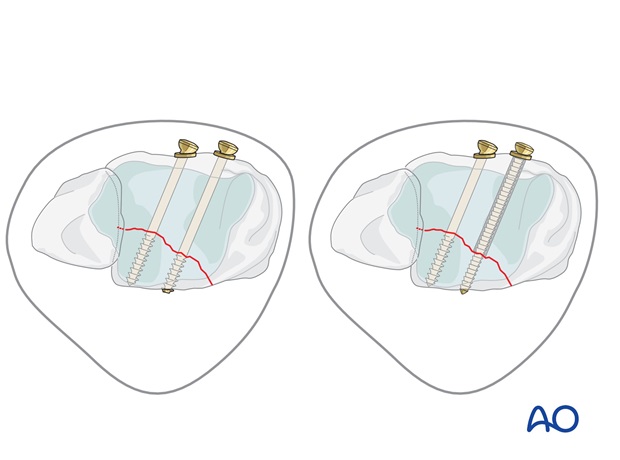Volkmann fracture: anterior lag screw
1. Preliminary consideration
Medium sized fragments (> 25% of the articular surface) can be fixed with lag screws.
If the fragment is large and has a proximal extension, it may be desirable to add a buttress plate. This can only be performed through a posterior approach.
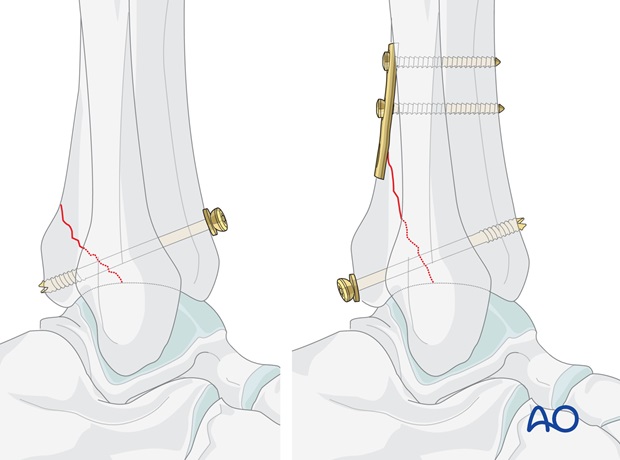
A small fragment (< 25% of the articular surface) with joint stability after malleolar reconstruction = fixation is not necessary.
A medium sized fragment (> 25% of the articular surface), without long proximal extension = fixation with lag screw(s).
A large fragment (> 25% of the articular surface) with long proximal extension = fixation with lag screw and buttress plate.
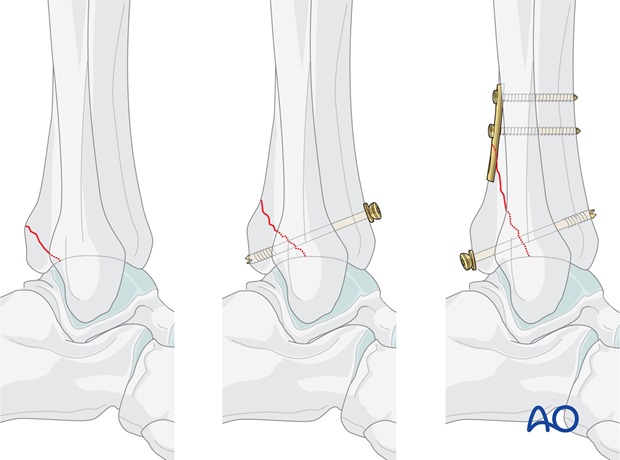
2. Reduction
Ligamentotaxis
Following fixation of the fibular fracture, reduction of the Volkmann’s triangle may be attempted through ligamentotaxis by dorsiflexing the foot.
If necessary, hold the Volkmann’s fragment in place with a dental hook through the lower extent of the lateral approach used for the fixation of the fibula.
If anatomic reduction of the Volkmann fragment is achieved with these methods, it can be fixed with screws inserted anteriorly.
If anatomic reduction is not achieved, the fragment should be exposed directly to obtain reduction and it can then be fixed with screws inserted posteriorly.
Preliminary fixation
Provisional fixation of the Volkmann's fragment is achieved with two K-wires, or two 1.25 mm guide wires for the cannulated screws, inserted through the stab incision from anteromedial to posterolateral. The guide wires should be perpendicular to the fracture plane, at the desired positions of the planned screws. The thread of the cannulated guide wire must be engaged just through the far cortex.
Note
Care must be taken not to damage the neurovascular bundle and the tendons that lie on the anterior surface of the tibia.
Check reduction and position of guide wires under image intensification.
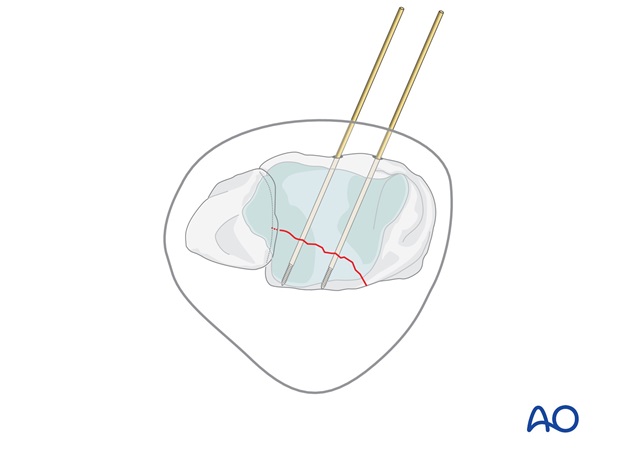
3. Fixation using cannulated screws
Screw selection
Determine the length of the screw with the appropriate depth measuring device.
The chosen 3.5 mm partially threaded cannulated screw must lie with its threads completely beyond the fracture line and totally within the Volkmann's fragment to achieve interfragmentary compression. If possible, engage the far cortex. Use a washer.
If the thread of the 3.5 mm partially threaded screw would still come to lie on both sides of the fracture, to avoid significant protrusion with a longer screw, a fully threaded screw may be used, overdrilling the anterior tibia to form a 3.5 mm gliding hole.
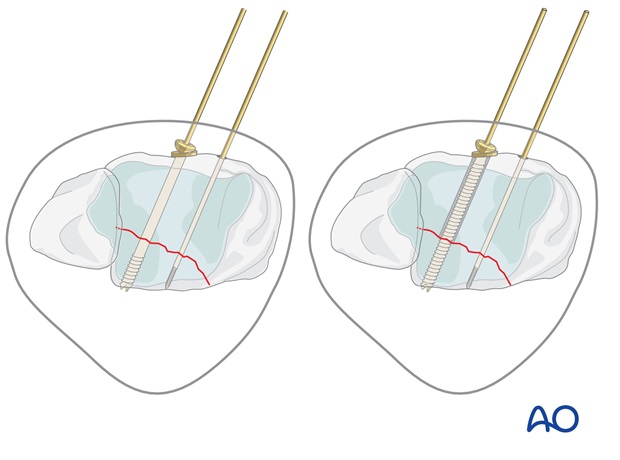
Insert the first screw
Drill a hole over the more lateral guide wire, through both fragments, with a 2.7 mm cannulated drill bit. Tap the anterior tibial cortex with the 3.5 mm cannulated tap and protection sleeve.
Insert the selected 3.5 mm partially threaded cannulated screw with a washer.
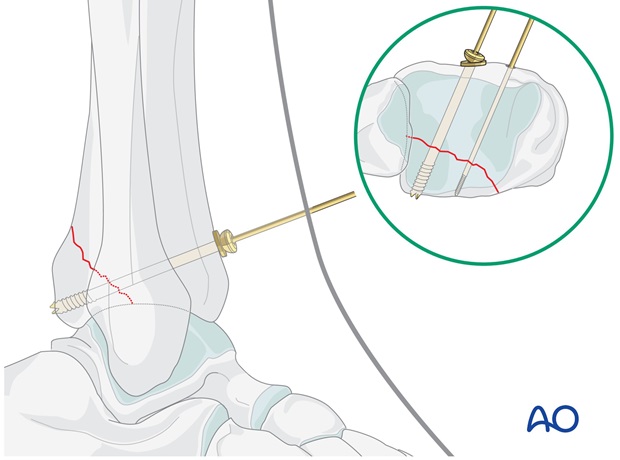
Insert the second screw
Remove the first guide wire.
As a rule, a screw which is 5 mm longer than the measured size must be chosen for the second screw as the more medial portion of even a large Volkmann's fragment is often not deep enough to accommodate the whole of the threaded portion of the screw.
The screw tip may therefore protrude a little posteriorly.
If the thread of the 3.5 mm partially threaded screw would still come to lie on both sides of the fracture, or if you do not want the tip of the screw to protrude into the posterior soft tissues, insert a 3.5 mm fully threaded cannulated screw as a lag screw instead, overdrilling the anterior tibia to form a 3.5 mm gliding hole.
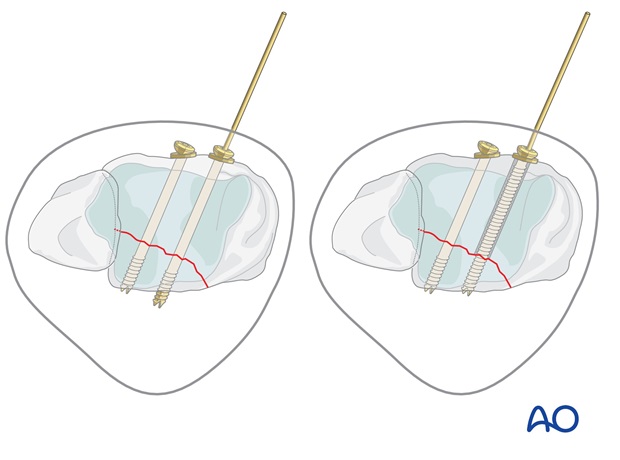
4. Fixation with non-cannulated screws
Screw selection
The chosen 4.0 mm cancellous screw must lie with its threads completely beyond the fracture line and totally within the Volkmann's fragment, to achieve good interfragmentary compression. If possible, engage the posterior cortex. Use a washer.
If the thread of the 4.0 mm cancellous screw should come to lie on both sides of the fracture, insert a 3.5 mm cortex screw as a lag screw instead, overdrilling the anterior tibia as a gliding hole.
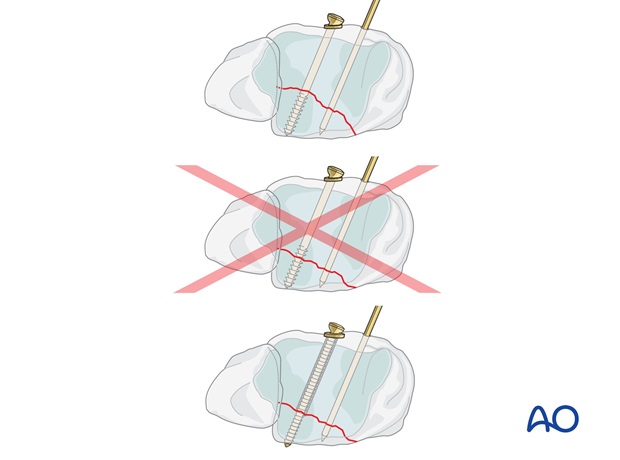
Insert the first screw
Remove one K-wire and drill a hole through both fragments parallel to the K-wire, using a 2.5 mm drill bit and protection sleeve.
Measure the depth of the hole and tap the near tibial cortex with the 4.0 mm cancellous tap and protection sleeve. Insert a 4.0 mm cancellous screw with a washer.
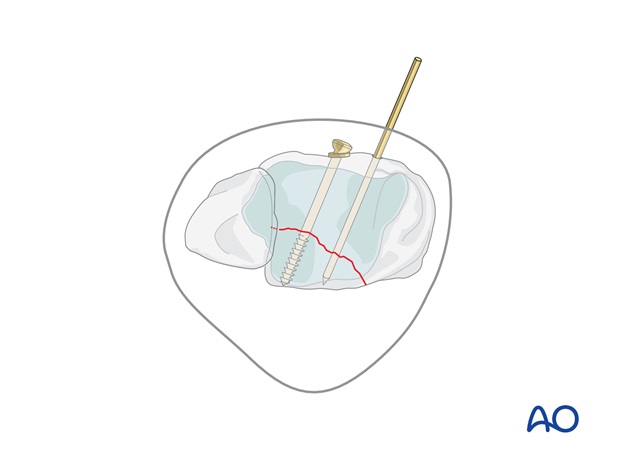
Insert the second screw
Remove the K-wire.
As a rule, a screw which is 5 mm longer than the measured size must be chosen for the second screw as the more medial portion of even a large Volkmann's fragment is often not deep enough to accommodate the whole of the threaded portion of the cancellous screw.
The screw tip may therefore protrude a little posteriorly.
If the thread of the 4.0 mm partially threaded screw would still come to lie on both sides of the fracture, or to prevent protrusion of the tip of the screw into the posterior soft tissues, insert a 3.5 mm cortex screw as a lag screw.
